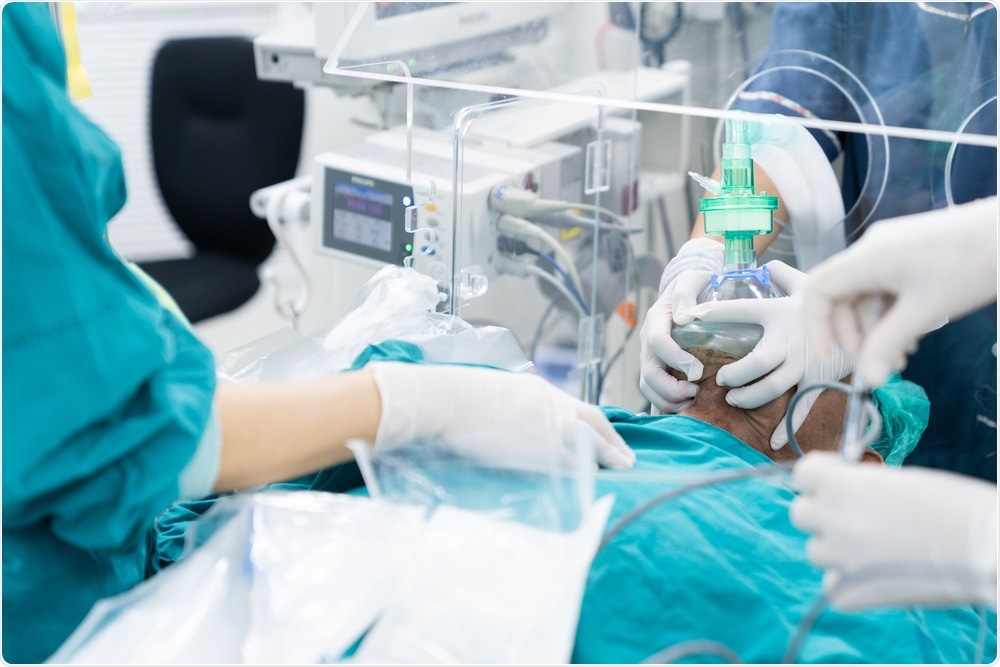An interesting new study describes a novel aerosol box design that has been produced and tested in Riyadh, Saudi Arabia to prevent airborne transmission of the severe acute respiratory syndrome coronavirus 2 (SARS-CoV-2).
 Study: Protective Boxes to Prevent Airborne Transmission of SARS-COV-2: Hospital-Based Experiences and a Narrative Literature Review. Image Credit: ChaNaWiT / Shutterstock.com
Study: Protective Boxes to Prevent Airborne Transmission of SARS-COV-2: Hospital-Based Experiences and a Narrative Literature Review. Image Credit: ChaNaWiT / Shutterstock.com
Background
Aerosol boxes have been available since March 2021 as a way to perform intubations without having to use a negative pressure room with more than 12 changes of air per hour and having to use personal protective equipment (PPE) at all times. Such precautionary measures introduce inconvenience and delay into the procedure.
However, earlier aerosol boxes are also associated with several limitations. These range from a simple transparent plastic box, with two openings posteriorly, for manipulation. Later iterations introduced a plastic bag that covered the box on all sides, with additional notches on the back as required.
While these factors may limit the dispersal of infectious particle-laden aerosols to the gowned arms and gloves, their use increased the time to intubation and the number of attempts required as compared to conventional procedures. These limitations might compromise the patient’s health by introducing unnecessary delays, as well as breach PPE regulations.
Further improvements, such as oval asymmetrically placed ports and a larger box for heavier or larger patients, have been reported.
These aerosol boxes are recommended for non-emergency airway procedures, such as insertion of a nasogastric tube, replacing tracheal tubes, suction of a tracheostomy, and postoperative tracheal extubation in non-critical patients. Such boxes may also help contain infection while transferring patients within a hospital.
Surgical procedures on patients with coronavirus disease 2019 (COVID-19) may also be carried out using these boxes to intubate operative patients. Currently, a trial is ongoing to assess the time and number of attempts to successful intubation. These studies are also looking to determine the time during which the airway is manipulated, with and without the aerosol box, in patients undergoing elective surgery.
The Saudi experience
The aerosol box used in the current study is a 60 cm3, with one open side, to which arms have been fitted to allow it to be used on a stretcher. A plastic sheet drapes the box all around, with notches that may be made in this sheet to introduce the operative tools, without compromising the freedom to maneuver tools.
Moreover, the cover allows negative pressure to be created using a suction device fitted with a bacterial/viral filter. Custom holes may be created for the main and assistant operators, as well as for bougie and suction tools.
The advantages of this box include the large size, the additional pair of openings for helpers to use, and space for other maneuvers. The efficiency of the box was tested, thus demonstrating its efficiency to trap aerosols within it upon suction, and prevent the escape of smoke or air freshener to the outside in a clinical situation.
In the latter scenario, a critically ill patient who needed bag-and-mask ventilation was treated within this box with no issues.
“The use of the aerosol box was very effective in handling the patient, airway maneuvering, and providing assurance and confidence for the team as they can work with the feelings of safety and protection. In addition, the box fits well on ED stretchers and can be tucked around the bed in a very stable way.”
Advantages and drawbacks
Besides the flexibility and ergonomic characteristics of the box, the protection it offers to emergency room operative staff and assistants is real. The room air is also kept cleaner, with the reduced aerosol distribution. The use of the box for elective intubations may also prevent the need to change PPE in between patients.
However, much of the expected benefit is predicted from simulations rather than real-life clinical situations.
There is little data available on the performance of medical and assisting staff with these boxes in an emergency situation, including the intubation of COVID-19 patients after failed non-invasive ventilation attempts. Thus, it is recommended that clinical staff use the techniques they are best trained in under such circumstances.
More research is required to determine whether a plastic drape is useful or counterproductive in terms of whether it breaches the PPE regulations. Recent studies have concluded that there is significant exposure of laryngoscopists and other anesthesiology staff to airborne particles and that this is increased with the use of sealed boxes.
A new scoping review presented potential issues with airway manipulations, intubations, safe PPE use, and patient injury with the use of such boxes. Notably, the data in this review came mostly from case series, preprints, and expert opinions, as well as modeling simulations.
Another set of questions involves the method of cleaning the contaminated boxes between procedures, and the risk of producing a secondary aerosol once the box is removed from the patient.
What are the implications?
While aerosol boxes have attracted much interest and undergone significant and repeated modifications, they have not yet cleared the hurdle of clinical review. These systems still present some technical difficulties when used during intubation and similar procedures, without correspondingly strong evidence that they prevent viral transmission.
“The FDA [the Food and Drug Administration] has revoked the EUA [Emergency Use Authorization] of aerosol boxes because there is no reliable evidence concluding that the potential benefits of such barriers could outweigh the potential risks.”
Aerosol boxes may be used only in combination with PPE and after proper training. At present, these systems may not be used in emergency situations.